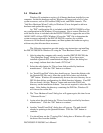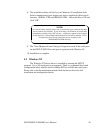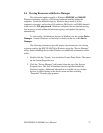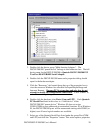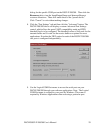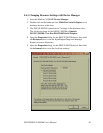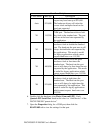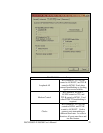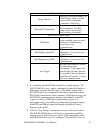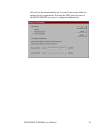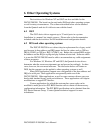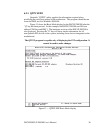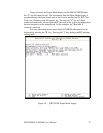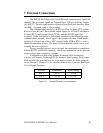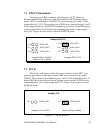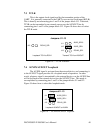
Hardware automatically enables
the transmitters when
transmitting. Transmitters will
turn off three bit-times after the
last stop bit of the last character,
regardless of baud rate. Used in
two-wire communication.
Auto Toggle
DTR is set to enable the
transmitters. Used in two-wire
communication
Half Duplex using DTR
RTS is set to enable the
transmitters. Used in two-wire
communication.
Half Duplex using RTS
Transmitters and receivers are
always enabled; ports can send
and receive simultaneously.
Used in four-wire
communication.
Full Duplex
RS-422/485 Duplex Mode
Receivers are only enabled when
not transmitting. In a Half
Duplex mode, you will not
receive what you transmit.
When NOT Tranmitting
Receivers are always enabled. In
a Half Duplex mode, you will
receive what you transmit
(sometimes called echo).
Always Receive
Receive Control
8. To summarize the RS-422/485 output drivers enable options: The
DSCLP-200/300’s ports may be configured for either full duplex or
half duplex operation with this option. The default setting is the
RS-422/485 ports are configured for full duplex operation with the
RS-422/485 output drivers always enabled. In half duplex mode, the
RS-422/485 transmitter may be enabled and disabled via the RTS
(request to send) or DTR (data terminal ready) signals, or in
auto-toggle mode, set to enable only when data is being transmitted.
Both RTS and DTR are controlled through the Modem Control
Register of the 16550.
9. Click the "Port Settings" tab and then click the "Advanced" button.
The DSCLP-200/300 driver will display a custom Advanced Port
Settings control, which allows the ports UART compatibility mode
and FIFO threshold levels to be configured. The threshold values of
DSCLP/SSCLP-200/300 User's Manual 33



